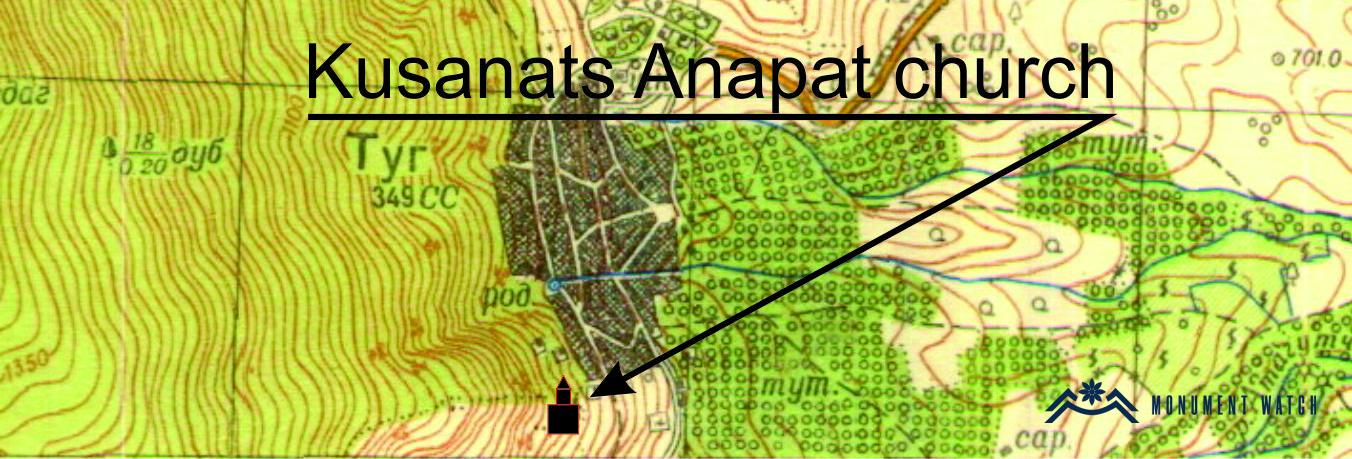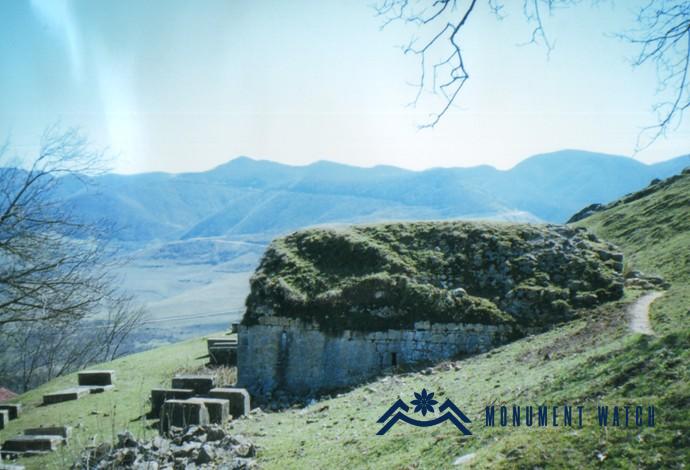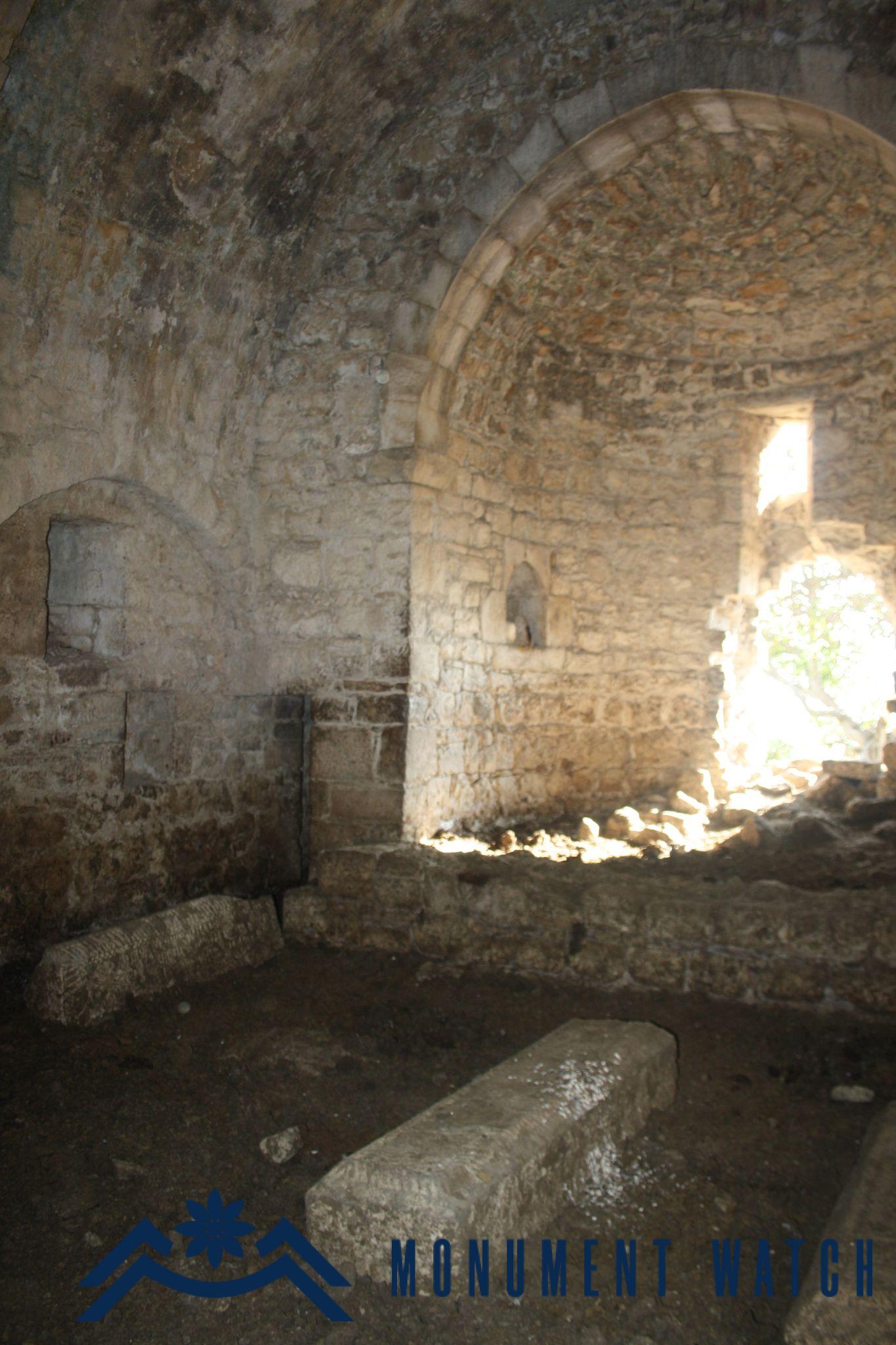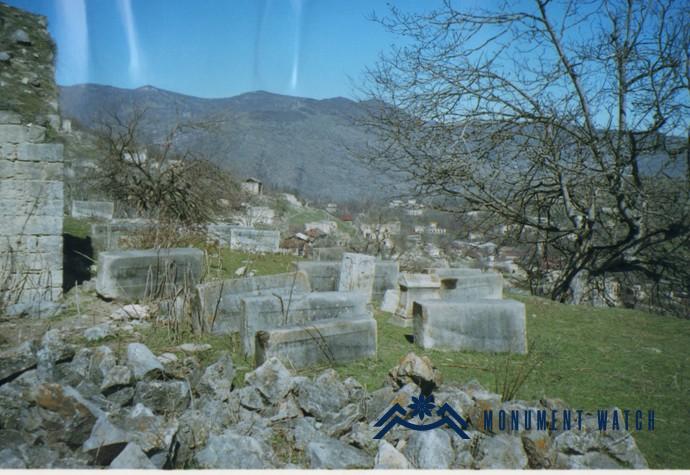St. Vardan’s church in Togh Anapat
Location
The church is located on a steep slope in Artsakh's Hadrut region, near the western part of Togh village (Fig. 1). Azerbaijan has occupied the Togh village since October 2020.


Fig. 1 The church from the south-east, photo by G. Budaghyan.
Historical overview
The information about the church's construction is based on a local legend that "a man descended from nobles converted to Islam, then repented, and built the churches of St. Stephanos and St. Vardan as a symbol of sincere devotion" (Jalaliants 1858, 260). The church was also known as St. Vardan, according to Sedrak Barkhudaryan (CAE 5, 174).
Architectural-compositional examination
It is a single-nave rectangle hall. The tabernacle and two sacristies attached to the tabernacle from the south, crown the hall from the east. Two bow-shaped arches extend from the prayer hall's longitudinal wall pilasters and support the vaulted roof. . The western wall of the church is completely buried in earth, whereas the northern side is only partly buried (Fig. 2).

Fig. 2 The view of the church from the north. The photo is from the electronic database of the State Service for the Protection of the Historic Environment of the Republic of Artsakh.
The entrance is on the south side. Four small windows, three of which open to the east and one to the north, provide light. On a khachkar at the entry lintel, the only inscription from the church, "Khachs Vardan" (Barkhutaryan 1895, 51), has been preserved. Several tombstones, most of which are buried in the earth, have been preserved inside the church (Fig. 3). Melik Bakhtam's tombstone is one of them. According to the inscription on his tombstone, he died in 1787 after being poisoned by Ibrahim Khan (CAE 5, 178). The cemetery surrounds the church, with the majority of the tombstones dating from the 19th and 20th centuries (Fig. 4).

Fig. 3 The interior of the church, 2016, photo by S. Danielyan.

Fig. 4 The segment from the cemetery, photo is from the electronic database of the State Service for the Protection of the Historic Environment of the Republic of Artsakh.
The condition before, during, and after the war
The church was not damaged during the warfare.
Bibliographic examination
Barkhudaryan mentioned the Anapat church, saying, "Melik Bakhtam's tombstone is placed in the church, which is covered with soil." "There are pieces of cells, dwellings, and fragments around the church that show that a convent existed there." (Barkhutaryants 1895, 51). According to the same author, a silver cross with the inscription "In memory of Meliq Yesayi's son Safar Bek, these are the relics of patriarch Jacob and Teodoros" was stored in Togh village (Barkhutaryants 1985, 49).
Sh. Mkrtchyan also discussed the Anapat church’s geographical location, architecture, and history (Mkrtchyan 1985, 95).
Bibliography
- Barkhutaryants 1895 - Barkhutaryants M., Artsakh, Baku, Aror.
- CAE 1982 – Corpus of Armenian Epigraphy, issue 5, Artsakh, Yerevan, made by S. Barkhudaryan, Yerevan.
- Voskian H., the Monasteries of Artsakh, Vienna, 1953.
- Mkrtchyan 1985–Mkrtchyan Sh., Historical-architectural monuments of Nagorno Karabakh, Yerevan.
- Jalaliants 1858- Jalaliants S., Journey to Greater Armenia, part B, Tifilis.
St. Vardan’s church in Togh Anapat
Artsakh